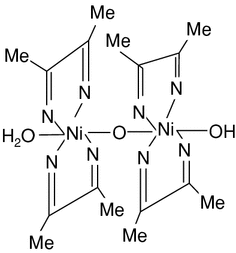Structure Of Ni Dmg 2 Complex
Mori machine tools. Individual configuration to meet your specific requirements.
7tox for final cut pro dmg. , 'copyright':'Copyright', 'support':'Support', 'adminpanel':'Admin Panel', 'loggedinas':'Logged in as', 'bannedipsintro':'To ban an IP Address or delete any existing ones below', 'bannedipsaddbannedip':'Add banned IP address', 'remove':'remove', 'ipaddress':'IP Address', 'banfrom':'Ban From', 'notes':'Notes', 'addbannedip':'Add Banned IP', 'errorsubmittingform':'There was an error submitting the form, please try again later.'

Examples of molecular weight computations: C14O162, S34O162. Definitions of molecular mass, molecular weight, molar mass and molar weight. Molecular mass (molecular weight) is the mass of one molecule of a substance and is expressed in the unified atomic mass units (u). (1 u is equal to 1/12 the mass of one atom of carbon-12). M/2 further supported by additional studies of Pfeiffer C9) who showed that a nickel complex could be formed from a mono-0-ether derivative of benzildioxime. A further modification of the structural formula for nickel dimethylglyoxime was proposed by Brady and Muers (10), fhey reacted the compound with methyl magnesium iodide. 25481-21-4 - HTLPAEWBUABNNS-UHFFFAOYSA-L - Nickel(II) EDTA complex - Similar structures search, synonyms, formulas, resource links, and other chemical information. Ni(dmgH) 2 complex can serve as active sites to promote H 2 generation of MOFs. The efficient charge transfer from MOF to Ni(dmgH) 2 causes the enhanced H 2 production. The low cost and easy operation makes Ni(dmgH) 2 having great potential for photocatalytic H 2 production.
Structure Of Ni Dmg 2 Complex 4
| Physical Chemistry Virtual Lab Physical chemistry (also called physicochemistry) is the explanation of macroscopic, microscopic, atomic, subatomic, and particulate phenomena in chemical systems in terms of physical concepts; sometimes using the principles, practices and concepts of physics like thermodynamics, quantum chemistry, statistical mechanics and dynamics. Spectrophotometry Cryoscopy Ebullioscopy EMF measurement Determination of Viscosity of Organic Solvents Adsorption Isotherm Verification of Tafel Equation Determination of Viscosity Average Molecular Weight of Polymer Calorimetry -Water equivalent Calorimetry Calorimetry -Heat of Neutralization |
| Organic Chemistry Virtual Lab Organic chemistry is a discipline within chemistry which involves the scientific study of the structure, properties, composition, reactions, and preparation (by synthesis or by other means) of chemical compounds that contain carbon. Detection of Functional Groups Detection of Elements: Lassaigne鈥檚 Test Separation of Compounds Using Column Chromatography Purification by Fractional distillation/crystallisation Purification by Steam distillation/crystallisation Laser Flash Photometer Organic Preparations - Allylation of Isatin Estimation of Aspirin Estimation Of Glucose Calculation of 位max of Organic Compounds Using Woodward Fieser Rules |
| Inorganic Chemistry Virtual Lab Inorganic chemistry is the branch of chemistry concerned with the properties and behavior of inorganic compounds. This field covers all chemical compounds except the myriad organic compounds (carbon based compounds, usually containing C-H bonds). Water analysis-Determination of Physical parameters Water analysis-Determination of Chemical parameters Acid Base Titration Gravimetric Estimation of Barium Gravimetric Estimation of Nickel Crystal Field Theory Group Theory Alloy Analysis (Brass) Soil Analysis-Determination of Specific conductivity of Soil Soil Analysis-Determination of pH of Soil |
| Advanced Analytical Chemistry Virtual Lab Analytical chemistry is the branch of chemistry concerned with studying the properties of materials and development of tools used to analyze materials. It is the science of sampling, defining, isolating , concentrating and preserving samples. Soil Analysis-Determination of Available Organic Carbon content in the Soil Soil Analysis-Determination of Available Nitrogen content in the Soil by Kjeldahl method Soil Analysis-Determination of Available Phosphorus content in the Soil by Bray's method Electrogravimetric Estimation of Metals Estimation of Phosphate Content in Soft Drinks Flame Photometry Polarography - Determination of Unknown Concentration of Cadmium Polarography - Determination of Unknown Concentration of Vitamin C |